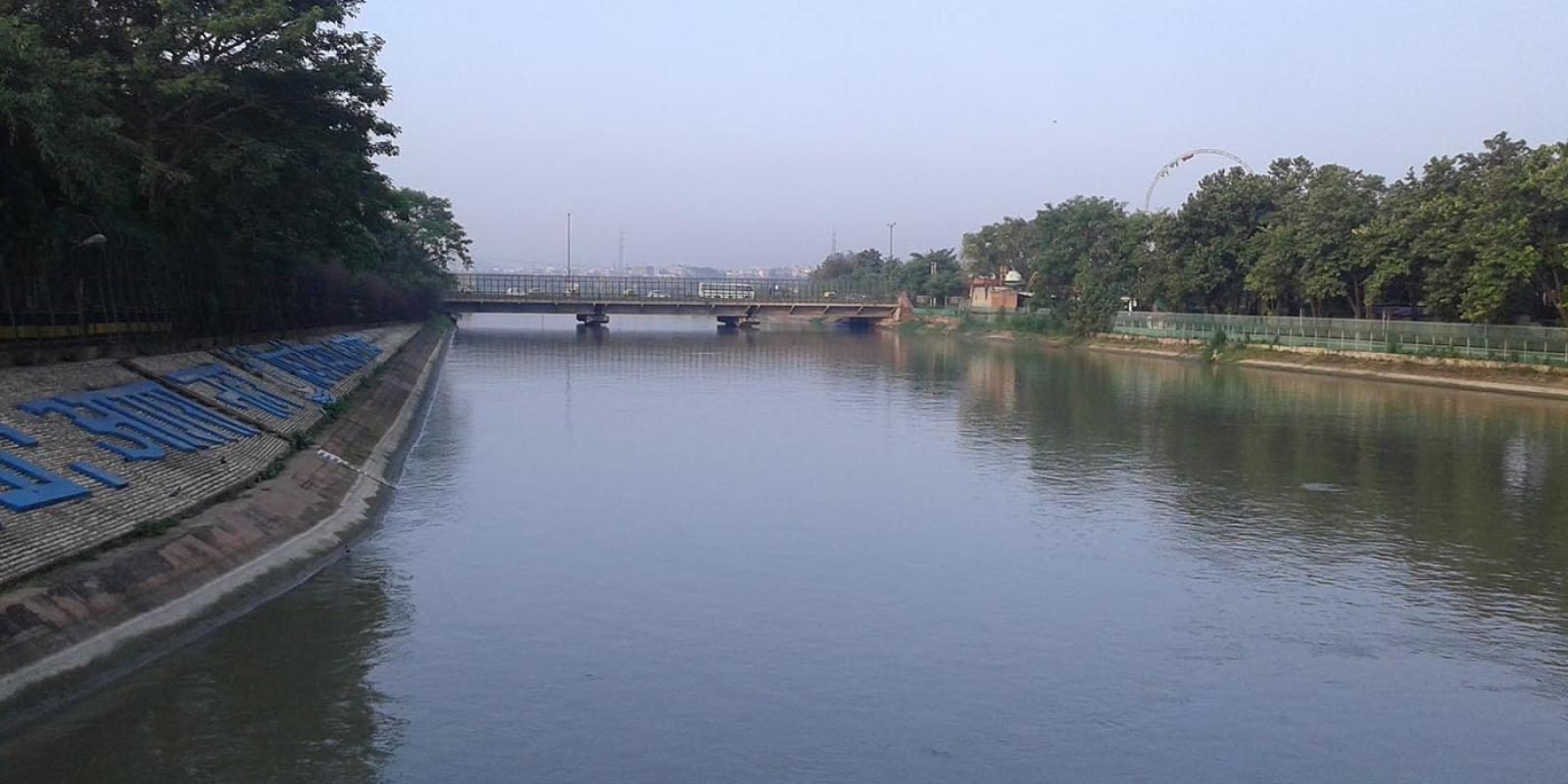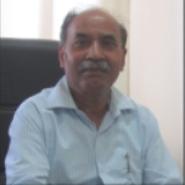
Unbridled urbanization marks Delhi, the capital city of India, that lies on the banks of the river Yamuna. Delhi is a mega city that has been continuously growing with an estimated population of approximately 21 million as of 2022, with wealth divide being starkly visible. Our focus for this project is the stretch of 52 kilometres of the Yamuna river from Palla in the north to Jaitpur in the south of Delhi. (header image by Sidheeq on wikimedia)
Rationale
The Yamuna is in a very poor state with insufficient flows for most of the days even during the monsoons ( South Asia Network on Dams, Rivers and People, July, 2022). The enhanced levels of pollution can be historically traced to the setting up of the modern waterborne sewerage system for New Delhi that was put in place after New Delhi’s inauguration as the British capital city in 1931. Despite the Yamuna being considered a goddess by the Hindus, the river has been connected to waste, with domestic sewerage and industrial effluents flowing into it, other than the dumping of ritual wastes. The floodplains have been sites of cremation, while also being home to riverine communities, other than many unauthorized housings in the last two decades, that have cumulatively contributed to the environmental vulnerabilities. Alongside restoration interventions since the early 2000s, the Yamuna flood plains have witnessed construction of the Commonwealth Games Village in 2010, three thermal Power Plants (Indraprastha, Pragati I and II), a bus depot among others built spaces. While the Indraprastha Power Plant has been shut, the other two have been converted to Gas. In the East Bank, the flood plain is under a large forest patch as well as agricultural farming and private plant nurseries. The National Green Tribunal’s latest order (January, 2021) points to the inadequate functioning of diverse government bodies while also noting the continuity of encroachments on Zone O of the floodplains (that is regarded as flood prone and hence there is an embargo on any construction in this zone by the Delhi Development Authority (DDA).The diversity in land use and the built environment in the flood plains in this stretch of the river, including the judicial and policy interventions and conflicts, the concern of poor governance of Sewerage Treatment Plants, make it an appropriate site for studying the nexus between the physical environment of the Yamuna and societal and material action in the Delhi city.
The disruption of the Yamuna is progressive and multi-layered. It can be traced historically to the making of the modern colonial city of Delhi through the rhetoric of ‘improvement’ and ‘progress’ in relation to waste management with the setting of the waterborne sewerage system. Currently, the West Bank of the Yamuna river flood plains in Delhi has land of the fly ash pond from the power plants in 2010, that had been converted by the Delhi Transport Corporation into a Bus parking. In addition, there is a government Plants Nursery, a CRPF ( Central Reserve Police Force) camp, a CNG( Compressed Natural Gas) filling station. In the East Bank there is the Yamuna Bank Metro ( Under Ground) complex which includes a Bus Depot, station and residential property. Starting with the water sewerage system implemented by the British, the gaps in waste water management in postcolonial India, the spate of constructions on the river’s active flood plain that have occurred amidst the setting of the legal regime for environmental protection in India, with conflicts between diverse development agencies and stakeholders, have led to non-implementation of many orders of the NGT. The governance of the new Sewerage Treatment Plants ( STPs) have been observed by water activists to be a very severe problem that undermines efforts to revive the river's ecology. Studies of the Yamuna Flood Plains in Delhi have identified the contribution of riverine communities farmers, fisherfolks and cattle herders in these floodplains. Disruption of the Yamuna have thus occurred across different periods of history, aided by diverse regimes of urban governance and planning, evolving logics and imagination of urbanisation and the failure to contain environmental and social vulnerabilities.
Our case study is situated on the understanding drawn from Ulf Hannerz ( 1992) that while rivers connect diverse aspects of socio- economic life to one-another, the intricacy of this connectivity is the result of complexity in the social organisations. Inspired by the work of Bruno Latour’s Actor-Network Theory, sociologist Martina Low’s discussions of the interactions between societal actions and material structures in the development of space and anthropologist Setha M. Low’s work on public space, we address the disruption of the Yamuna between1920-2020, bringing the physical, material qualities of the environment in relation with their human, cognitive and societal aspects. As Awadhendra Sharan (2014) has observed, “Delhi’s water, we suggest, was subject to the same play of colonial difference as other schemes of improvement were to be and what emerged in the wake of a century’s efforts at improvement was a city and a capital, adjacent in space but destined towards different futures”. Our research will both trace and investigate the changing space of river Yamuna (including its floodplains) alongside rampant urbanization of Delhi, historically and in the present through 1990-2020, through social activities and structures, noting the urban form to be a relational concept (Daniel Kiss and Simon Kretz, 2021). We shall study the nexuses occurring within psychological, sociological and economic and administrative spaces, spaces of imagination, in combination with each other, and the Yamuna as a public space as it emerges through the network of various administrative plans. The results of our analysis can support existing revitalization initiatives of the Yamuna with the understanding of urban space being produced by societal processes, through “arrangements” of living beings and social goods, a space being created through processes of perception, memory, imagination and usage as it manifests as a social structure, offering insights on inequalities, justice, wellbeing and thereby human development.
Strategy
The primary revitalization goal for our proposed initiative is to reclaim the relationship of Delhi’s residents to the Yamuna, bringing in a consideration of human development as a factor for river revitalization. This approach takes both traditional and emerging relationships between river and people, both near the river and in the city as a whole into consideration. This questions the way removal of “encroachments” often happen, without appropriate rehabilitation and other river development interventions that conceive the ecosystem of the Yamuna river in geo-physical terms, rather than that of relationship between the geophysical, built environment and people of Delhi and is often structurally classist. We intend both engaging with stakeholders in the government and authorities on including human development aspects or indicators to river revitalisation initiative. Secondly, while water of Yamuna is part of everyday life for every Delhi resident but it is mostly addressed as a geo-physically situated entity that is distinct from the city. While people are familiar with Delhi Jal Board ( Delhi Water Board), however, there is hardly much familiarity or understanding of how Delhi gets its water supply and what can be done to support the supply in making Delhi sustainable in terms of water. The State Council of Educational Research and Training, Delhi, has a training manual on Cleanliness of The Yamuna for school students and teachers. As part of our knowledge partnership initiative on the Yamuna we intend engaging with city school students and youth on the river in the city, educating Yamuna’s contribution to Delhi’s everyday life.
Methods
Our team will tell the story of the Delhi-Yamuna nexus with a monograph and three journal papers. We shall also document (audio-visual) the oral history of riverine communities and an exhibition of photographs. Through Main Bhi Dilli Campaign’s advocacy with the Delhi Development Authority (DDA), the Draft Master Plan for Delhi 2041 has recognised farming as a permissible activity in floodplains, the current floodplain restoration initiatives of the Government envisages among other aspects, removal of settlements from floodplains and do not encourage urban agriculture, a practice that has been prevalent within the formal framework through a farmers’ cooperative setup in 1949. We intend doing a GIS mapping of the shifting relationship of Yamuna and Delhi for the period 1920-2020, integrating key data from archival and ethnographic research including contemporary conflicts and challenges to human development and the shifting urban form of India’s capital city. We intend creating a knowledge partnership initiative with interdisciplinary scholars, city planners, riverine communities, administrators, civil society, industry representatives, school teachers and students among others across educational institutions in the National Capital region of Delhi, , to engage with formal and non-formal schools, and colleges, to build an awareness of the Yamuna as Delhi’s primary water source. An output of this knowledge initiative will be training manuals on Yamuna, encouraging school and college projects on Yamuna’s revitalization.


